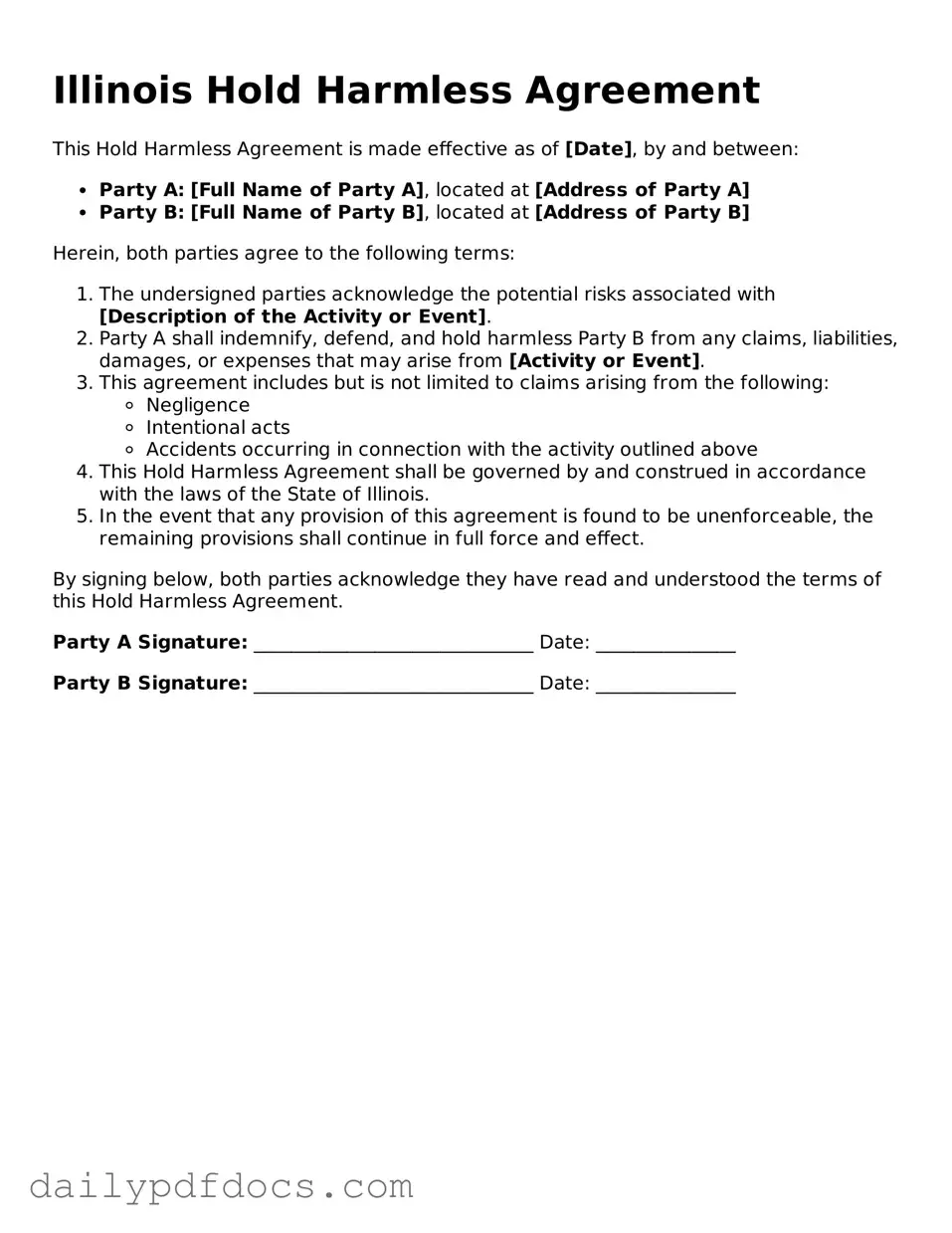What is an Illinois Hold Harmless Agreement?
An Illinois Hold Harmless Agreement is a legal document that protects one party from liability for certain actions or events. By signing this agreement, one party agrees to not hold the other party responsible for any damages, injuries, or losses that may occur during a specific activity or event. This type of agreement is often used in various contexts, such as events, rentals, or partnerships.
Who typically uses a Hold Harmless Agreement in Illinois?
Various individuals and organizations use Hold Harmless Agreements in Illinois. Common users include event organizers, property owners, businesses, and non-profit organizations. For example, a venue hosting an event may require vendors to sign this agreement to limit liability for accidents that occur during the event.
What are the key components of a Hold Harmless Agreement?
A typical Hold Harmless Agreement includes several essential components. These often consist of the names of the parties involved, a clear description of the activity or event, the specific liabilities being waived, and any conditions or limitations. It is also important to include a statement indicating that both parties understand the agreement and voluntarily accept its terms.
Is a Hold Harmless Agreement enforceable in Illinois?
Yes, a Hold Harmless Agreement is generally enforceable in Illinois, provided it meets certain legal requirements. The agreement must be clear, unambiguous, and not against public policy. Courts will typically uphold these agreements unless they are found to be overly broad or unfairly disadvantageous to one party.
Can a Hold Harmless Agreement protect against all types of liability?
No, a Hold Harmless Agreement cannot protect against all types of liability. While it can limit liability for negligence or certain risks, it may not be enforceable in cases of gross negligence or willful misconduct. Additionally, certain statutory liabilities may not be waived through such agreements.
Do I need a lawyer to draft a Hold Harmless Agreement?
While it is not legally required to have a lawyer draft a Hold Harmless Agreement, consulting with one is highly recommended. A legal professional can ensure that the agreement is properly tailored to your specific situation and complies with Illinois law. This can help prevent potential disputes in the future.
How can I ensure that my Hold Harmless Agreement is valid?
To ensure the validity of your Hold Harmless Agreement, make sure it is written clearly and includes all necessary components. Both parties should read and understand the terms before signing. It is also advisable to have the agreement notarized or witnessed to add an extra layer of legitimacy.
What should I do if someone breaches the Hold Harmless Agreement?
If someone breaches the Hold Harmless Agreement, the first step is to review the terms of the agreement to determine the nature of the breach. Depending on the situation, you may choose to resolve the issue through negotiation or mediation. If these methods fail, legal action may be necessary to enforce the agreement and seek damages.
Can a Hold Harmless Agreement be revoked or modified?
Yes, a Hold Harmless Agreement can be revoked or modified if both parties agree to the changes. It is important to document any modifications in writing and have both parties sign the revised agreement to ensure clarity and enforceability.
